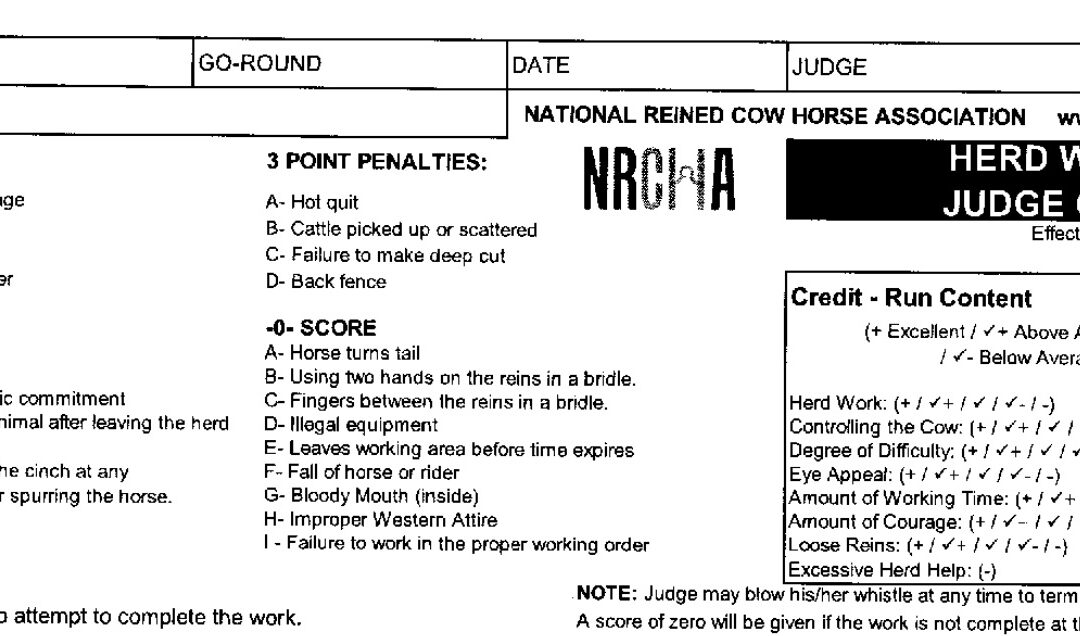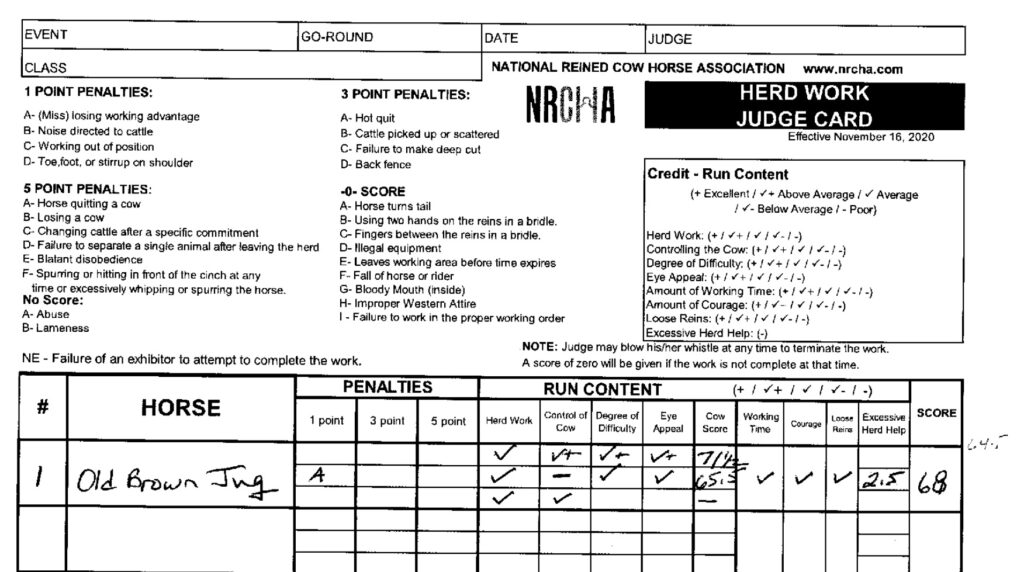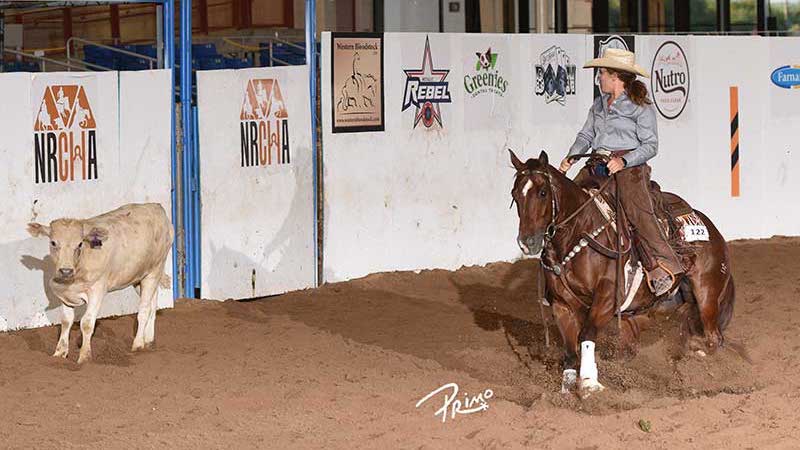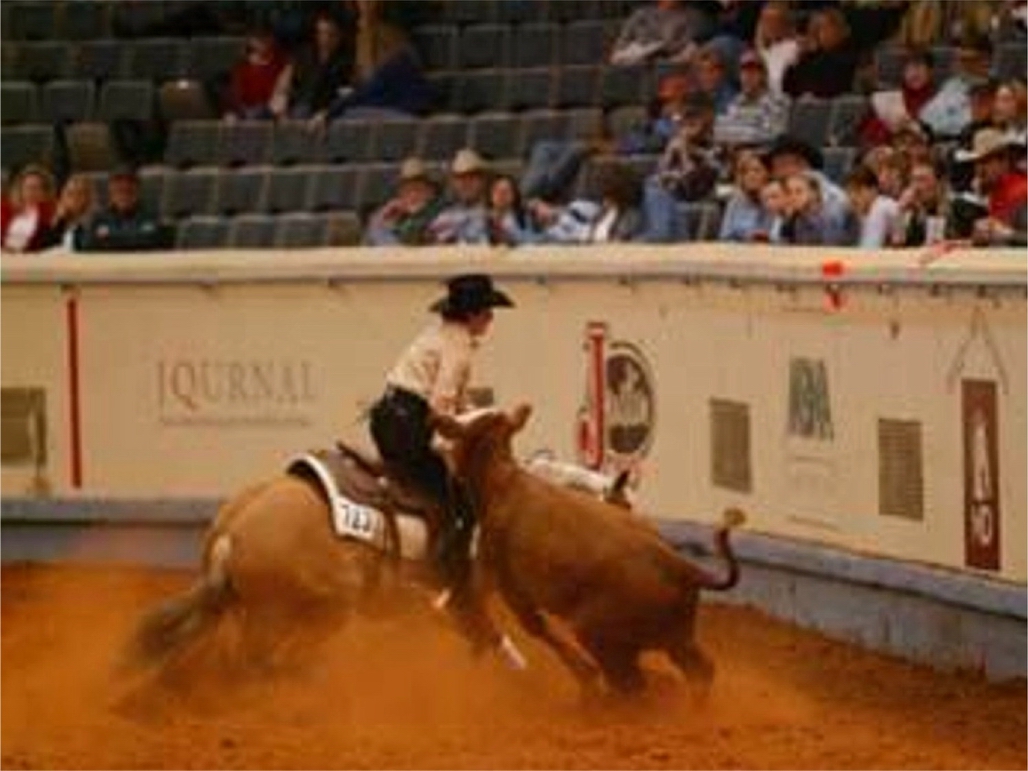
Excessive Herd Help
It seems like after every major event, the topic of excessive herd help comes up. It was covered really well in Dec at the NRCHA Judge’s Seminar, so I thought before the Celebration of Champions, I’d recap what is allowed to do without consequence to the exhibitor vs what will result in a reduction of their score.
The herd holder’s duty is to contain the herd giving the cutter the opportunity to demonstrate their horse’s ability to cut a cow cleanly with little or no disturbance to the herd and to drive the cow up out of the herd to the middle of the working area. They then should make sure all the cattle are back in the herd and move to the side where they can control the herd yet not distract from the run.
Any excessive action by the herd holder can result in a reduction of the score for that run. For instance, if the action of the herd holder “saves” the contestant from incurring a major penalty (such as losing a cow or getting a back fence), or the herd holder cuts down the width of the pen, or in fresh cattle, drives the herd out for the cutter, a penalty may be applied.
Here are a few examples of what can and can’t be done without penalty.
- If the exhibitor is ready to get off, but the cow won’t turn away 1) as the cow approaches the side of the arena and the exhibitor is in position, the herd holder can move up and turn the cow away without penalty. However, if the exhibitor is behind and has lost control, and the herd holder turns the cow away thus saving the exhibitor from losing the cow, a penalty should be applied.
- If the exhibitor loses control while making a cut and the herd holder prevents the cow from being lost, a penalty should be applied.
- After the cut has been made, if the herd holder doesn’t move over to the wall causing the cow being worked to be influenced by his presence, a penalty may be applied
- If the herd holder is sitting in the corner as the cow approaches the corner, the herd holder moves slightly, no penalty. If he comes out of the corner and obviously attempts to stop or turn the cow, the run content should be reduced.
The general rule of thumb is when a major penalty is saved by the action of the herd holder, the judge can deduct up to ½ the value of the penalty that was going to be incurred. So, for a back fence, it would result in a 1.5 point deduction. For a loss, it would be 2.5 points. This is taken over on the far-right side of the judge’s card and is deducted from that particular cow’s score, not subtracted at the end like a back fence or a loss would be.
All that said, the job of the herd holder is to help the exhibitor, and we’d all rather lose 2.5 points instead of 5 points. The key is to stay in the position of control and if you’re not, don’t be surprised if you see an excessive herd help penalty on your card.
See the score card below for clarification:



